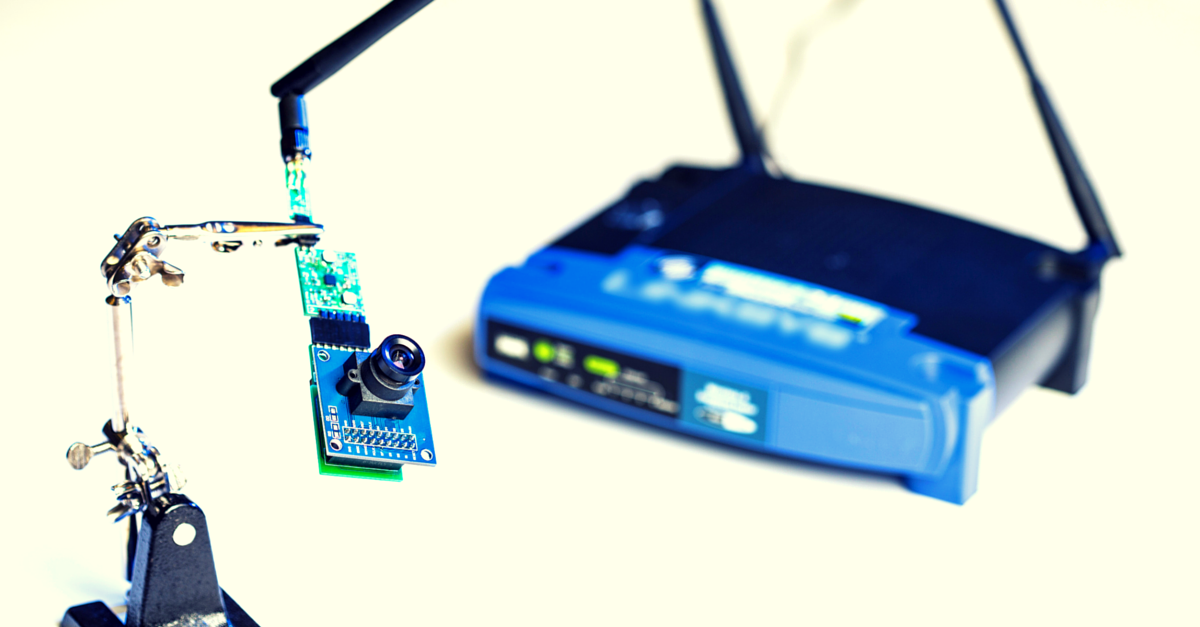Indian Origin Engineers Help Crack Technology That Powers Devices Using WiFi Signals
A team of researchers from the University of Washington, including those of Indian-origin, has developed a technology that uses a Wi-Fi router to wirelessly power various devices without affecting the quality of internet signal. It is called the Power Over Wi-Fi (PoWiFi) system.

A team of engineers from the University of Washington has developed a technology that uses a Wi-Fi router to power various devices. It is called the Power Over Wi-Fi (PoWiFi) system, and is a very innovative technology.
Vamsi Talla, an Indian origin UW electrical engineering doctoral student is the lead author behind the system, and Shyam Gollakota, assistant professor of computer science and engineering is a co-author.
Source: www.washington.edu
“For the first time we have shown that you can use Wi-Fi devices to power the sensors in cameras and other devices…We also made a system that can co-exist as a Wi-Fi router and a power source – it doesn’t degrade the quality of your Wi-Fi signals while it’s powering devices,” said Vamsi Talla.
The team had published an online paper titled – Powering the Next Billion Devices with Wi-Fi, earlier this year explaining how they harvested energy from Wi-Fi signals to power a temperature sensor, a low-resolution grayscale camera and a charger for a Jawbone activity tracking bracelet (a fitness tracker).
“We present the first power over Wi-Fi system that delivers power to low-power sensors and devices and works with existing Wi-Fi chipsets. Specifically, we show that a ubiquitous part of wireless communication infrastructure, the Wi-Fi router, can provide far field wireless power without significantly compromising the network’s communication performance,” says the paper.
Wi-Fi routers already transmit power. With PoWiFi, the routers send out a constant 1W signal instead of the irregular power currently used. This signal is then captured and turned into DC power by harvesters. Thus, the idea behind PoWiFi is to embed small computing sensors in everyday objects like cell phone, washing machines, air conditioners and more, thereby using those sensors to harvest Wi-Fi signals and power the devices.
An initial challenge faced by the team during the development of the system was – how to charge low-power sensors without plugging them to a power source? While looking for a solution they found that the peak energy available in untapped Wi-Fi signals is close to what is required to operate some low-power devices. But these signals are sent out in an intermittent pattern because of which energy leaks out during the intervals. To fix this problem, the team optimized a router in a way that it would send out the surplus power packets on the Wi-Fi channels, that is not in use currently, without affecting the quality or speed of data transmission. And the sensor placed in devices will then be able to harvest the power.
According to Popular Science magazine, PoWiFi system is one of the most innovative and game-changing technologies of the year. The magazine has included it in the annual “Best of What’s New 2015” awards.
For prototype, the team displayed that Wi-Fi signals can be used to power the following devices:
- A grayscale, low-power Omnivision VGA camera powered from 17 feet away – Such that it stores enough energy to capture an image every 35 minutes.
- They recharged the battery of a Jawbone Up24 wearable fitness tracker from zero to 41 percent in 2.5 hours.
- Powered a temperature sensor.
They also tested the system in six homes, and it was noticed that there was no reduction in the page loading or video streaming speed. This proves that the quality of Wi-Fi signals is not affected. While the initial experiments have tested only low power devices, the team believes that the system can be made more efficient.
The co-authors include UW electrical engineering doctoral students, Bryce Kellogg and Saman Naderiparizi; research associate, Benjamin Ransford; and associate professor of computer science and engineering and of electrical engineering, Joshua Smith.
According to a report, the final paper will be presented in December at the Association for Computing Machinery’s CoNEXT 2015 conference in Heidelberg, Germany.
Like this story? Or have something to share? Write to us: [email protected], or connect with us on Facebook and Twitter (@thebetterindia).
If you found our stories insightful, informative, or even just enjoyable, we invite you to consider making a voluntary payment to support the work we do at The Better India. Your contribution helps us continue producing quality content that educates, inspires, and drives positive change.
Choose one of the payment options below for your contribution-
By paying for the stories you value, you directly contribute to sustaining our efforts focused on making a difference in the world. Together, let’s ensure that impactful stories continue to be told and shared, enriching lives and communities alike.
Thank you for your support. Here are some frequently asked questions you might find helpful to know why you are contributing?


This story made me
-
97
-
121
-
89
-
167












